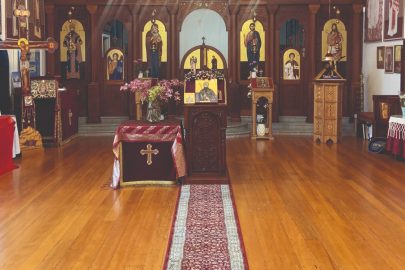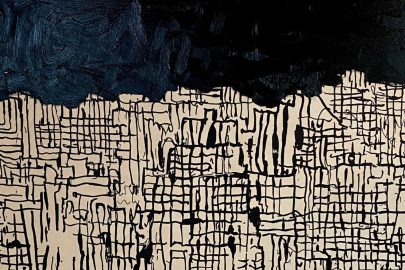Oct 21, 2014 Urban design
Inside the strange, sordid world of Derek King, a former architect who gave food and shelter to homeless streetkids – and at the same time created his own personal harem of under-age prostitutes.
First published in Metro, October 2012.
Monday night was art gallery night, and he’d always dress for the occasion. He favoured big aviator sun-glasses. He wore cream pants, and grey shoes. He’d spruce up his haircut of tight little white ringlets, that “baffling perm”, as photographer Patrick Reynolds described it, that “mad hair” as remembered by gallery owner Gary Langsford. His skin was very pale. He carried a damp flannel in his pocket.
He’d walk. He lived downtown, on Constitution Hill, in an ivy-covered Edwardian townhouse, bought when he was about 32, in 1978. He rented out the top floor. He kept his yellow Ferrari Dino and his burgundy Jaguar in the downstairs garage. He lived inbetween. The front door was gated, and the windows were barred; visitors knew to come around the side.
He attended Monday night openings at the Anna Bibby Gallery on the corner of Kitchener and Victoria Sts and the Gow Langsford Gallery in Lorne St. “He used to show up to every bloody opening,” said Langsford. “Just there for the free wine. Never bought anything. Even when we took him off the invite list, he turned up! Always in the same clothes. Crumpled linen jackets. And that mad hair.”
The last time he saw Derek King, he thought, was at an exhibition opening of Karl Maughan’s vast, luscious botanical paintings in May 2011. The beautiful painted flowers, the excellent conversation — and King, who looked like no one else, looking on, observing, evidently deranged. Anna Bibby emailed from her home in France, “He was quite aloof and never spoke to me. Actually, come to think of it, he never spoke with anyone but rather used the room as his private catwalk, did a few circuits, just to make sure that everyone was aware of him, and left. Who was he?”
He would sip, he claimed, “only a little half-glass of wine”. It sent his blood pressure “through the roof”; his health was delicate, due to his coeliac disease, an extreme intolerance to gluten. Symptoms include fatigue and particularly foul-smelling excrement.
He continually wiped his hands with a flannel — he was afraid of germs from the outside world, but he lived in chaos and filth.
He arrived alone and left alone. He’d walk back home, take off his clothes, and put on a robe. He had three old terrytowel robes. They were all he ever wore inside the townhouse. He was naked underneath. He continually wiped his hands with a flannel — he was afraid of germs from the outside world, but he lived in chaos and filth. A friend recalled the incredible layer of grime that had built up on the stove. The house was a tip, “a hovel”, said Detective Sergeant Andrew Saunders of the Auckland police. He couldn’t believe the smell. “It stunk of like rotten vegetables,” said Nikita Jones, a 28-year-old former streetkid.
She first visited him when she was 13. Her best friend took her. They were both runaways, sleeping in the gazebo in Albert Park, and “the hole in the wall” in Myers Park. The what? “You know, the hole in the wall,” said Nikita. “It’s like a hole in the wall, and you can lie down in it.”
We met at her flat on a treeless street in Onehunga. It was the middle of the day in the middle of the week, and there were three other adults smoking on the deck, and four kids, aged between one and 10, playing on the trampoline. It was welfare and wagging, the usual hopeless cycle — “I’ve missed 18 days of school,” said a pretty seven-year-old with something like pride. But love fell in a light, steady rain on the kids, who were hugged, stroked, kissed; it was a happy home.
Nikita remembered back to 1997, and said, “Me and my mate knew one or two people whose houses we would go and stay at. Older street bums that had a flat in town. My mate said, ‘I’ll introduce you to Derek.’”
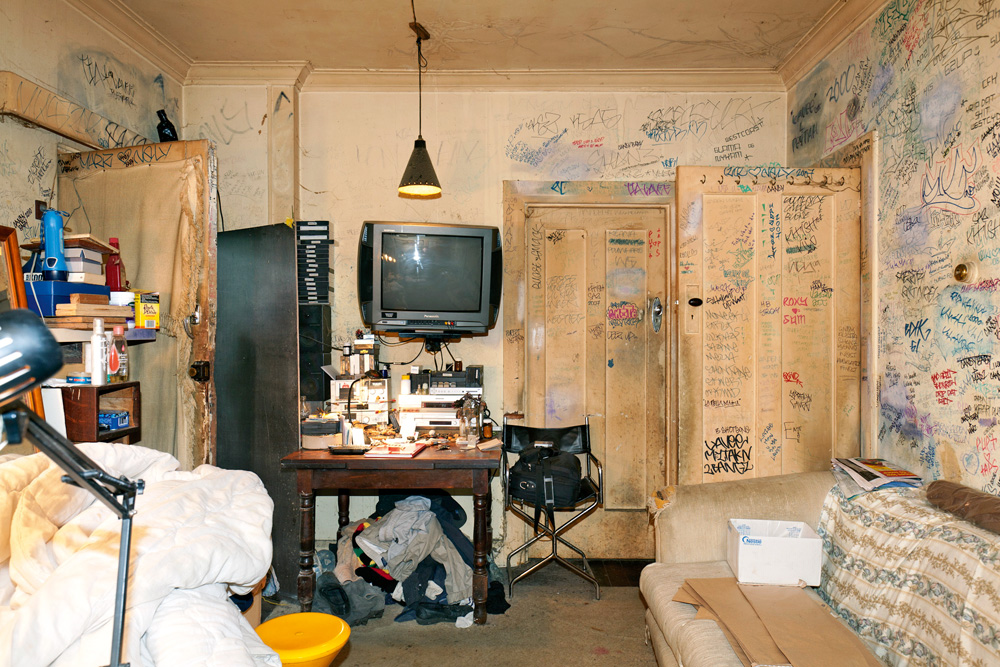
Air-raid tunnels were dug beneath Constitution Hill in 1941. They connected to Albert Park, and were able to provide sanctuary for an estimated 24,000 people, in case Auckland was attacked. The entrances were filled in after the war. King’s townhouse on the hill was another kind of subterranean escape.
“I hesitate to describe Mr King’s living quarters as underground,” a police officer told the High Court at Auckland during King’s trial in August, but that’s exactly what it was — an underworld, created and maintained by King, swanning around in his robes and his slippers, pale, diseased, a social outcast, once an important Auckland architect, clever and successful, with peculiar interests in punk rock and obvious interests in young girls, now paying desperate Maori streetkids — Nikita, her mate, runaways beyond number — to let him fuck them in exchange for money, shelter, and cheese on toast.
It carried on for over 20 years. All the Monday nights, snubbed at Gow Langsford; the plane trees on Constitution Hill dropped their leaves in autumn, sweet fruit fell from the Moreton Bay fig trees in summer; underground, in King’s grotto, six generations (“waves”, as King put it) of streetkids came and went. All girls, under 18, some as young as 12. They crashed the night, tagged the walls, smoked his pot; one girl lived with him for five years; another miscarried his baby. “I’m trying to help a whole bunch of people,” he told the court. He looked after them, he said. Fed them, gave them “allowances”, formed relationships.
He was telling the truth. They were, he said, “The Family.”
He was found guilty of 16 charges of sex offending — mostly “receiving commercial sexual services from persons under 18”. Sentencing is on October 23. Justice Kit Toogood warned King he would consider preventive detention. King is 66 years old.
“Oh, God,” he told the court, “I had a charmed life.”
He’d brushed out the corkscrew curls, and wore his white hair long and straight in court. For the verdict, he dressed in moccasins, baggy olive trousers and a wool jacket, with a button missing at the stomach; he had a faded elegance about him, a sense of style, although the fashion belonged to the 1980s. He contemplated the jury coming in, and yawned. He looked medicated. He was quite fat.
His lawyer, Nick Wintour, passed on a request for an interview. King was eager, but the Corrections Department refused. Prison guidelines state, “The department has a policy to facilitate media access when the resulting exposure will provide a positive focus on rehabilitation.” King wasn’t interested in rehab, remorse, and all the rest of it; he’d had his day in court, on August 20, when he took the stand in his own defence, and seized the opportunity to rave.
He was like some sort of Humbert Humbert, the cultured paedophile from Nabokov’s Lolita, with his courtly manner and archaic little pleasantries: “Oh boy! Goodness gracious me!”, etc. It was a manic performance. The judge later complimented Wintour for the way he handled his “difficult client”. No one believed much of what King said, but a lot of it was factual.
People who knew him in the 1980s were aware he came from a privileged background in Christchurch. They believed that, but were dubious when he claimed he designed the School of Architecture building in the University of Auckland. It was hard to reconcile — King had already gone to seed.
He raved in the High Court, “I graduated with design honours and they asked if I would design the School of Architecture. I know it sounds like some sort of fantasy that any young architect would love to get involved, but that’s amazing how that came about but I don’t think we’ve got time to go into all that sort of thing but anyway I ended up designing it, and suddenly it’s published around the world and I’m a famous architect…”
The university has no record of King graduating with honours. And although there is no record that his design was published anywhere in the world, it’s true that King was responsible for the impressive and ambitious School of Architecture conference centre, in 1978, when he joined top Auckland firm Kingston Reynolds Thom & Allardice (KRTA) as a staff architect.
KRTA were at the height of their fame. They’d designed Selwyn Village in Pt Chevalier, the Pakuranga Town Centre and the Holy Family Catholic Church in Te Atatu out of massive precast concrete panels, which continue to freeze the congregation to death in winter and boil them like lobsters in summer.
Professor Mike Austin, who taught King at the architecture school, was surprised KRTA offered him a job. “He was a difficult, noisy and hopeless student. Voluble. Full of bullshit.”
He laughed, and said, “We were extra-surprised when he got to design the school! We felt it was a mean and cruel trick that the profession played on us. It was like KRTA’s way of saying, ‘Well, if you’re going to pass buggers like this, then you can put up with the result.’”
How did he regard the building that King designed? “You’d have to say it was competent. There’s something quite good about it, but…” We met in Austin’s home on the King Edward Parade waterfront in Devonport; a small, intense sort of rooster, he writhed and grimaced as he conceded the conference centre had qualities. “The lighting’s good. There’s a big staircase which is quite interesting.” He relaxed as he arrived at a patronising thought: “It’s a little folksy building.”
Around the corner at his pretty home on the edge of mangroves, retired KRTA architect Denys Oldham, 80, had kinder words about his former colleague. “A lively lad. He had curly hair and a genial expression. He was vivacious. Attractive, one could say. You warmed to him. There’s plenty of architects you don’t remember a thing about. But I do remember Derek. He had a strong personality, aligned with considerable design ability.”
His review of King’s design for the conference centre? As he remembered, the project architect had left, “and Derek stepped into the breach. And really, apart from being a little contrived, he did a very good job. He designed the whole of that conference centre, which involved two lecture rooms, the admin block, the library, two major conference rooms — it was quite a tricky design. And it’s a fine piece of work.”
King, in court: “I only had three months to put that together and it was the third design attempt and, oh boy, it was a tricky one but we got it, I got it sorted, and I got a bonus, enough to put a deposit on my house.”
A property search confirms King is still listed as the owner. The blinds were pulled up on one window in courtroom 15 at King’s trial; it allowed the jury an intimate view of the lovely exotic trees across the road on Constitution Hill.
The good job, the house on the hill — the late 1970s were King’s halcyon years. He bought a yellow Ferrari Dino, so low that you practically had to lie down to drive it. “He was anal about that car,” said radio host Bryan Staff, who used to see King around town. “I remember him screaming at a gas station attendant for daring to touch the windscreen — ‘Do you realise how much this fucking thing is worth, you moron?’ That sort of thing.”
A friend said King couldn’t afford to insure it, and stored it in the garage like a prized jewel. But she remembers he once took another woman for a drive in it to Hamilton; King floored it, drove at insane speeds until the woman begged him to stop at Mercer. She got out and never spoke to him again.
What was all that about? Fun, bravado, the reckless spirit of punk rock? King, soft and petite in his denim jumpsuits, became an unlikely player in Auckland’s nascent punk scene. He put on concerts, and hired a bus to take six bands including the Suburban Reptiles and the Scavengers to play in Wellington. He brought the punk revolution to the capital.
In 1979, at the height of King’s brief fame as an impresario of punk, he was interviewed by the late Neil Roberts for an Eyewitness TV documentary. It’s online at NZ on Screen. King is nothing to look at, apart from the fact his eyes are completely dead.
“Always on the outside looking in,” said Judith Baragwanath. “A bit shady. Secretive. Furtive.”
Paul Rose, who managed punk bands such as The Newmatics, remembered King at venues such as the Windsor Castle in Parnell and the Rhumba Bar on Victoria St. “He’d bring his camera and stand at the back and just watch. He was always observing. He was a crowd watcher, not a band watcher. Always on the outside.”
“Always on the outside looking in,” echoed Judith Baragwanath, who was also on the scene. “A bit shady. Secretive. Furtive.”
“We used to call him Fish Fingers for the way he chased young girls,” said a former bootboy, who wanted his name kept out of the story. “An odious character. His demeanour was just sleazy. He was always your best friend! It was a mix of all that plus his fast-growing reputation as a predator. Girls knew to keep away.”
The last time he saw him was a couple of years ago, at the Auckland Film Fest-ival: “He made my skin crawl. I disliked him intensely.”
Paul Rose said the last time he saw King was at the 2011 Laneway concert in Aotea Square. “There he was with his camera again. By himself. Watching the crowd. Same old dirty Derek.”
Ex-punk Harry Russell — aka Harry Ratbag and Harry the Bastard — was more sanguine. “Derek was a fun guy,” he recalled. “You never quite knew what he was up to, but he seemed okay.” He saw King last year. They went for a drink. “Same old Derek. Sat there and listened.”
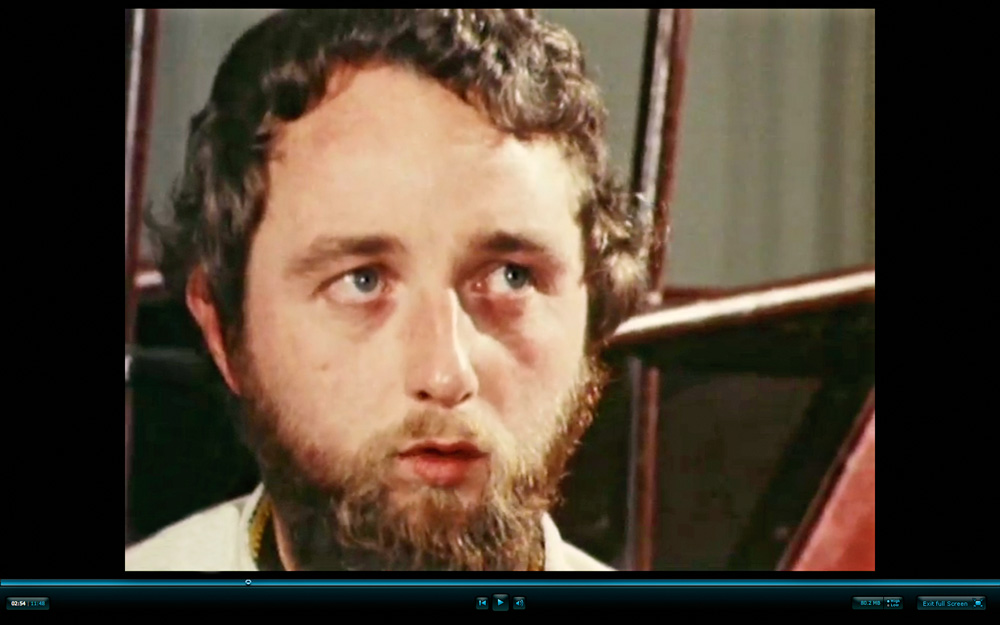
After designing the conference centre, King lived in Singapore for three years, as an architectural consultant. He returned to his home on the hill in 1982 and set himself up as a photographer — he approached pretty young girls and offered to shoot a modelling portfolio for them.
One such sweet thing was novelist Charlotte Grimshaw. “He got me into his house once and took Polaroids,” she said. “I was 15 or 16. He spoke of modelling jobs, then suggested we adjourn to the bedroom. I fought him off, and fled, laughing.” She thinks she may have stolen something on her way out. “Could it have been a Walkman? Surely not a toaster.”
How many other girls did he try it on with? How many submitted? Bruce Jarvis, who managed the film-processing lab Prism, developed King’s photos throughout that decade. “They were only ever of young girls,” he said.
Jarvis found an envelope containing negatives of one of King’s shoots in 1990. They were head-and-shoulder photos of a teenager who had taken her shirt off. She’s gorgeous, but the power of the photos isn’t her beauty: it’s her apprehensiveness, her look of fear. What was going on with the creature behind the camera? Who was she looking at?
“He was funny, also very intelligent,” said a woman who knew him in the 1990s, “and completely mad.” She tolerated his eccentricities — the grimy stove, the robes — and was amused by his rabid way of talking. “He always banged on about discovering all the models that did well in the 80s. According to Derek, it was him who discovered Rachel Hunter. I was sure he wasn’t lying, as he told everyone.”
Rachel Hunter’s agent, Andy Haden, rejected the claim. On holiday in Fiji, he emailed, “We have a letter and a series of photos that Rachel has authenticated as the first shots taken of her as a model, and the photographer wasn’t Derek King… I’ve never heard of the guy.”
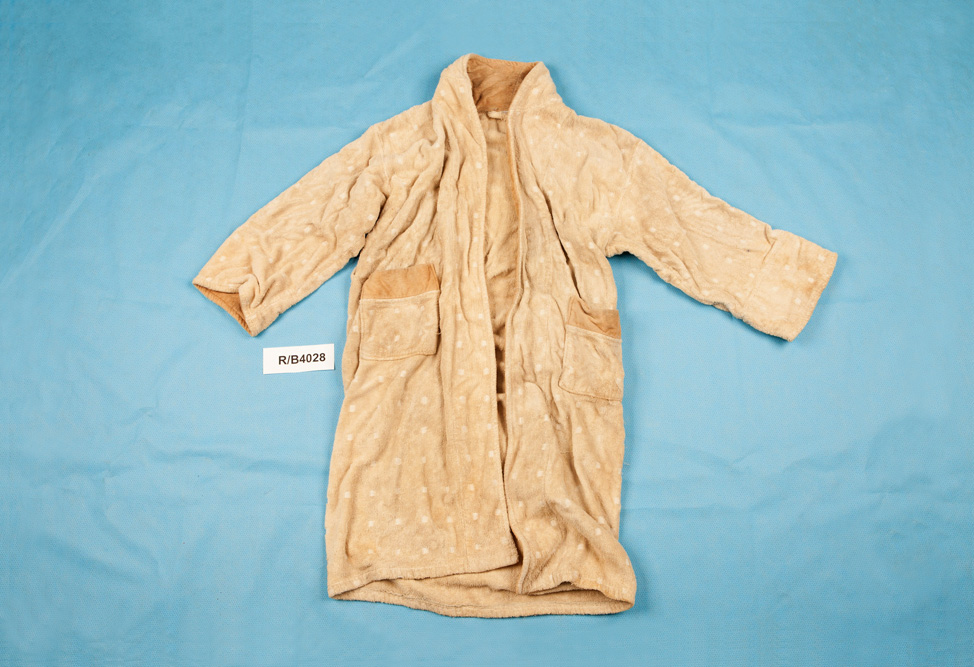
King went on a sickness benefit in the late 1980s. He couldn’t get a job as an architect. He was fading from view, retreating, going underground. All the wretched Mondays at art openings — he didn’t stand a chance. Over thick, oozing coffee at a Ponsonby villa, Patrick Reynolds and his brother John (sons of the late Ian Reynolds, who gave King the job at KRTA) recreated King’s agony.
John said, “I thought he was a tremendously opaque individual. Hard to read. And most people who met him had this sense of — you just backed away a little bit. There was a disquiet about him, because — ”
Patrick interrupted, “Why was he at the art openings? There was no engagement with the work on the walls.”
John said, “Derek was someone you didn’t want to spend time with. Not because he was odious or malevolent; you just had the sense that — ”
Patrick interrupted, “He was slightly slippery, though.”
John said, “Well, you just had this feeling —”
Patrick interrupted, “He was all wrong.”
John completed his previous sentence, “That he was out of alignment.”
“Very bad sunglasses,” said Patrick. “Too big and too flashy, and wearing them at night! And also the baffling perm.”
John said, “He needed to get out in the sun a bit more.”
Patrick said, “The pale, pale skin and the tight hair. And there was a sponginess to him; he wasn’t a coiled spring, he was the reverse to a coiled spring.”
“Dissolute,” said John. “He was dissolute. And conversations didn’t actually advance with him. He didn’t have anything to say.”
“He’d make these sly asides,” said Patrick. “Non sequiturs. And you get this feeling of being trapped with him.”
“All of us have social antennae where you pick up some sense of a person’s chemistry, or you get a sense of their social animus,” said John, “and there was a palpable sense there was never any Mrs Derek.”
But he had another, better life, full of lissome young Maori girls, back at his townhouse, in that sealed dark zone of fantasy and grime. He said in court that he first came across streetkids in 1986 — a couple of gluesniffers, in Albert Park, homeless, “living in the sewer”, runaways from foster homes and abusive families. Then he discovered 40 more, hanging around Karangahape Rd. “I suddenly realised, ‘I have to do something. I can’t just walk away from it.’ It just took you over, really, it’s quite amazing…”
They came to stay. King told friends he’d become a kind of social worker, even a de facto foster parent. He rented out the top floor of his townhouse for a couple of years to TV production company Cinco Cine; a friend remembered, “He used to drop blankets and food left over from film shoots to the streetkids over Grafton Bridge at night… We were seriously under the impression that he was being compassionate towards them, with no other motives.”
There were many other acts of kind-ness, or patronage, over the years. It wasn’t entirely sick lust and heartless monstrosity. He bought tampons and make-up, offered shelter, warmth, food; he did nice things. “I suppose so,” said Nikita Jones, who showed up at his door in 1997. “Everyone would leave their dirty clothes there and he’d wash them all with the Lux flakes. He fed us his famous cheese and onion on toast. But he was a cunt.”
She meant the time he found her when she tried to slash her wrists, and responded by throwing her out of the house. “He shooed me out the door, going, ‘Fuck off, fuck off!’, and I was pissing blood everywhere. That’s when I turned on him.”
Nikita was a “fourth wave” streetkid when she met King. She was born in Grey Lynn, “back when it was just coconuts”. She was abandoned, and made a ward of the state at four; at 13, when she met King, “I’d been in, like, 22 placements in 18 months. I kept running away. I’d get picked up probably once a week by the cops and taken back to a foster home and run away again. They ran out of suburbs to put me in, so they sent me to Dunedin. But I made it back. I was on the street for three years.” How did she eat? “I stole chocolates from Deka.”
The friend who took her to meet King was “doing jobs” with him — street slang for prostituting herself. “We went there and a couple of other streetkids were sitting around and they were like, ‘Give us a fucken cigarette, Derek, you fucken prick.’ That’s how they all spoke to him.” She remembers an outing in the Jaguar to smoke dope in the Domain; the girls in the back seat burnt his hair with their cigarettes.
Nikita began prostituting herself to him, too. She was just his type: a thin, lost child. The rate was $60 for 30 minutes. “After I did a job with him, he was like, ‘Oh, come and live with The Family, darling. You’ll get an allowance.’”
Six other ex-streetkids gave evidence against King. They were runaways from Blockhouse Bay, Glen Innes, Papakura. They told much the same story — a friend took them, they’d smoke pot, and King would say, “You’re a pretty young girl.” And: “Would you fuck me for $60?” Also: “It’s not prostitution. It’s a Family thing.”
A lot of the girls were sex workers. No one was innocent and everyone was damaged, but only King held the purse strings. The girl who lived with him for five years told the court, “I did form a relationship with him, but you can tell where he was coming from because as soon as I had kids and put on weight I was straight out the door. I couldn’t even get $5 off of him. He’d tell me, ‘You’re out of The Family.’ He does it with everyone. He does it over generations.”
“They used to love having sex with me,” King told the court. “I mean, it’s weird, I know… why would a young girl have sex with an old man?”
He made fleeting references in court to friends, adults from the outside world — “an architect mate” from Christchurch, “a famous violinist”. But he was most himself with little girls. In bed, he asked them to remove their pants, and kneel in front of him “like a dog kind of thing”, as one girl told the court. Nikita said she was always stoned “doing a job” with King. “It made it easier. You’d just sort of buzz out. Sometimes it made it worse. It made it intense, and you’d be thinking, ‘Oh god, when is this going to be over?’ He used to take ages. Ages.”
Priapic, mad, nostalgic, King said in court, “They used to love having sex with me… I mean it’s weird, I know, it’s kind of difficult to explain to people, why would a young girl have sex with an old man? I mean, goddammit, I don’t think I would if I was a young girl, but…”
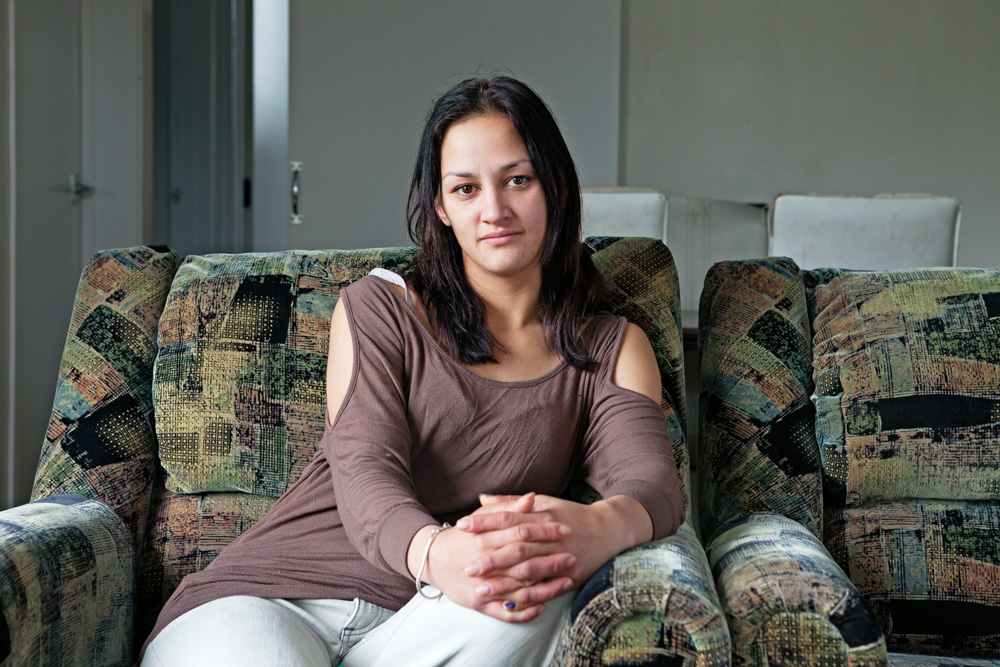
King’s central defence was that he didn’t know the girls were under the legal of age 18 when he paid them for sex. It wasn’t an argument that went very far.
The cross-examination was fairly routine — except for one moment when prosecutor June Jelas lost her patience, and squashed King like a bug.
She asked him, “The reality is you weren’t asking these girls their age, were you?”
King said, “You’re out of your mind. Of course I was. It never occurred to me these poor girls could be labelled as prostitutes; what did concern me was the fact that if someone came around searching the place and found girls under 18, I’m going to bloody jail. I come first in this whole situation. I’m no use to anybody if I’m in jail, I’m trying to help a whole bunch of people here and what — I’m going to be disappeared — Jesus, woman — ”
Jelas interrupted, “Yeah, that’s right, Mr King. You come first, because your first need seems to be having sex with young girls; that’s your big need, isn’t it?”
King said, “Look, that’s insulting to me, but it’s more insulting to these girls. They’re not the kind of girls that you can take advantage of.”
Jelas said, “But that’s exactly what you were doing, wasn’t it? You know many of them have no home to go, you know most of them have zero money, and here you are saying, ‘Have sex with me and I’ll give you money.’”
“No, no…”
“They’re your personal prostitutes, aren’t they?”
“What happens when you build up a relationship is that they — ”
Jelas interrupted, “What sort of relation-ship, Mr King? Let’s talk about it. What sort of relationship? It’s only a sexual relationship.”
King raved, “They’re my family, they’re in my care, this idea that somehow I’ve turned this place into a massage parlour where I turn up and have sex with them — it’s bizarre.
“They may get additional money. I’m more likely to buy someone a cellphone if we’re having an intimate relationship than someone who’s, you know, just getting their basic survival allowance. They get $20 a week minimum. They get $5 every time they come to the door. They need to be able to catch a bus, they’ve got to go home, if they’ve got a home to go to.
“They’ve got to have money to buy food, if I’m not cooking for them. I try and cook for them cos it saves me money. I’ve got a deep fryer now. I just throw chips and sausages in there and they love it. I used to melt cheese on things, I could melt cheese on left-over food, cardboard, polyurethane, anything, and they seem to love it…”
You can view the School of Architecture conference centre at Auckland University as a monument to a sleazebag, or assess it as an attractive example of late-modern design. “It’s an illustrious start to someone’s career,” said Paul Litterick, a PhD candidate at the school, who made many and varied approving noises as he conducted a tour of King’s one and only building.
It nestles below the curves of the so-called “banana building” of the school’s design block; a courtyard, with two stately oaks, marks it off as School of Architecture territory, an enclosed space, cloistered. Inside, Litterick liked the light, the spaces, the playful features.
There is a spiral staircase winding towards a glass turret, or “crystal tower”, as King’s former KRTA colleague Denys Oldham had called it. Litterick noted the use of different textures (fair-faced concrete, smoked glass), and said, “The design is very much of its time, but it’s adapted remarkably well.”
Everywhere, King’s hand, his vision, his brief promise. What happened? What brought him to the hell he made for himself inside the house on Constitution Hill? A pleasant 10-minute stroll separates the School of Architecture conference centre from his townhouse; one building had paid for the other, where he created his true masterpiece.
Police photos reveal a house that was no longer a house. King deconstructed it, tore it down around him. At the conference centre, he created space for orderly, well-behaved artworks by Pat Hanly and Dick Frizzell; in his own home, he set aside the wall of his lounge for streetkids to tag and deface. All the Mondays, not bothering to engage with trained, middle-class art on gallery walls; he lived with something far more radical and extreme, an anti-art, scrawled by many hands using many felt-tip pens. The crazed walls, the tarpaulins in the back yard — it was a lair, with King as its white worm, gorging on child sex. He was probably happy. He had company. Girls knew to visit. “Brats,” he called them in court, indulgently, with something resembling love.

